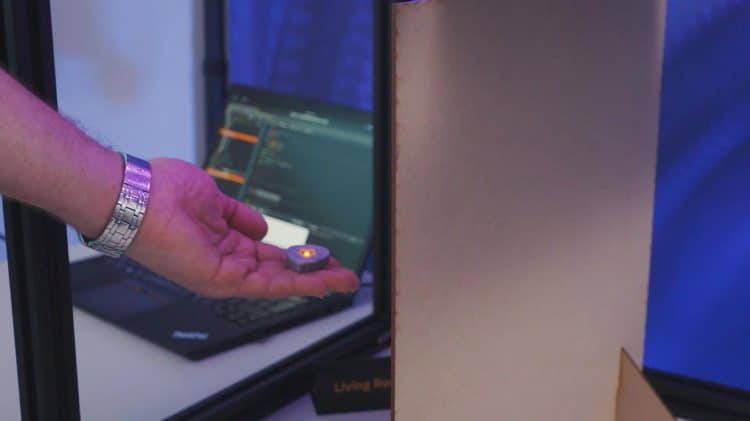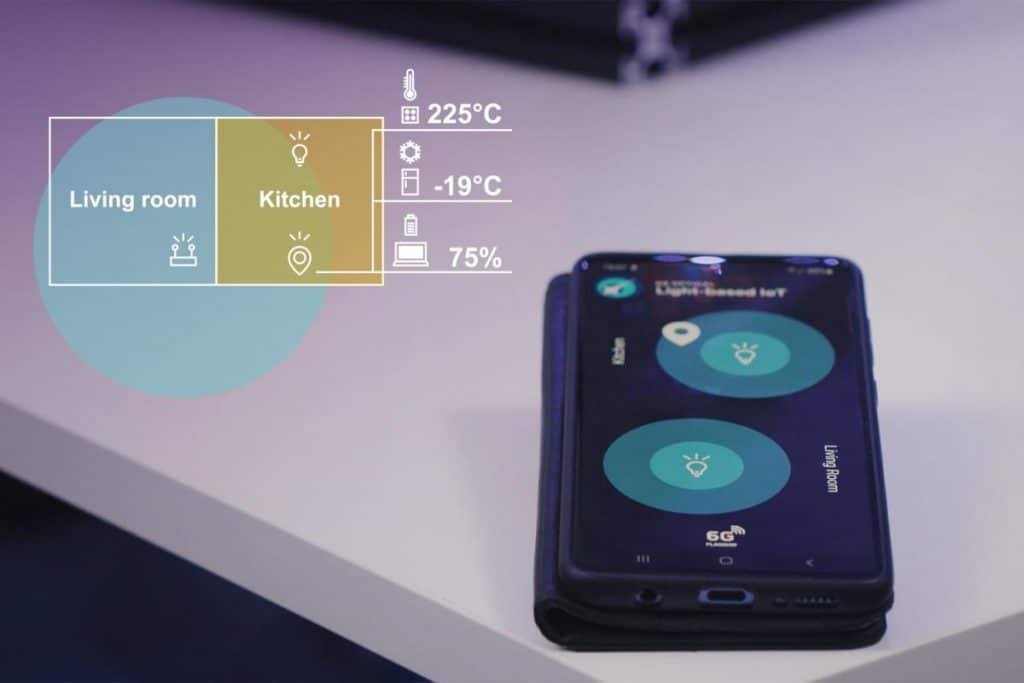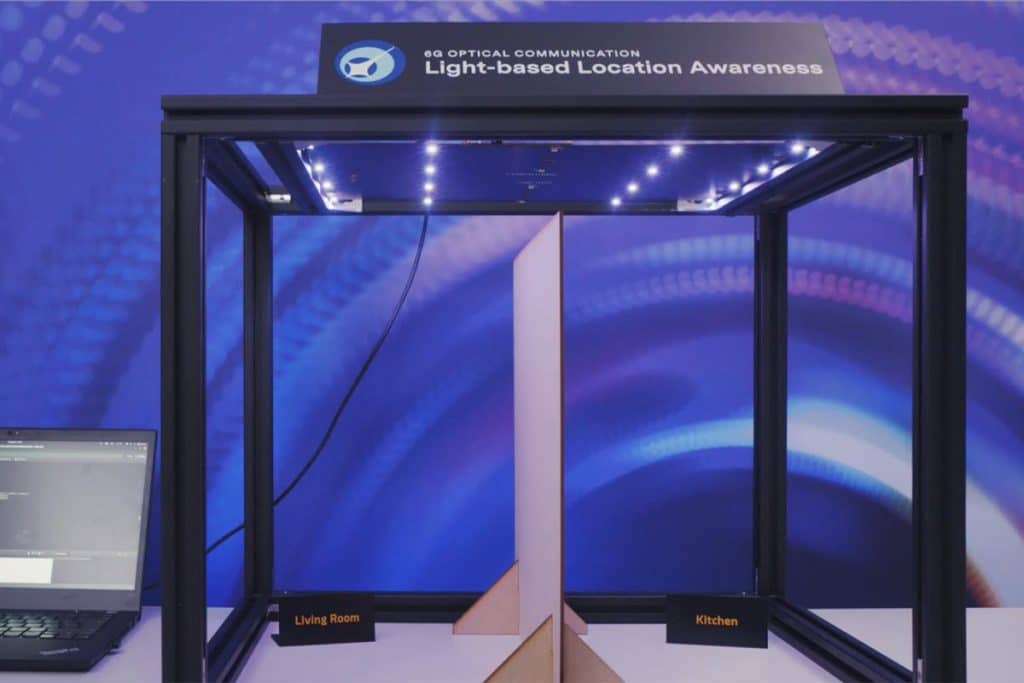
Effortless Awareness and Location-specific Services
Preventing eavesdropping and ensuring a person’s identity in a specific indoor environment can be solved with a somewhat simple but surprising solution – light that does not penetrate any walls.
Privacy is an absolute priority in the innovative light-based solution that 6G Flagship’s visible light communication (VLC) team is exploring. A recent demonstration on 6G optical communication shows how visible light enables data transfer and supports various future services. “In location awareness based on VLC, we utilise low-bandwidth communication to achieve full room coverage,” says project researcher Tore Leikanger.
The demo features a miniature house with two rooms – kitchen and the living room. “At home in a real-life house, you could go to the living room and then your phone would automatically connect to, for example, the speakers,” Leikanger explains. “You would have the option, for instance, to turn on the television. You would get all the services and all the gadgets in the living room as the first priority. You could control things from your phone or a watch.”

The technical realisation of the VLC transmission includes RGB LEDs which are illuminating the same way as a normal lamp. The communication functions equally well with any colour. “Our demo works in two different ways,” Leikanger specifies. “One way is such that the lamp is blinking. And every time the lamp is blinking, data is sent from the transmitter to the receiver. The other way is such that you cannot see any blinking.” Hence, the broadcasted messages can be sent as visible flickers or blinks in an otherwise non-illuminated area, or as invisible transmissions.
A wearable receiver device called the “jewel” indicates a person’s movement in the rooms by listening to the available VLC signals. “When we receive the data from the VLC lamp through the jewel, it is transmitted to the phone and the phone further transmits it to a Web server,” Leikanger says. “The system updates both the Android application graphical user interface (GUI) and cloud server GUI instantaneously. Thus, the Android application works as a gateway to the cloud server.”

VLC has advantages over RF technologies for indoor positioning due to line-of-sight communication. “Privacy and security are preserved since no location data is shared further than between the lamp infrastructure and the Android application, except in the demo, where the server is used for GUI purposes,” Leikanger notes.
Based on the position of the person wearing the “jewel”, or any similar wearable in the future, and who that person is, specific services can be provided. Health is a great example of a potential vertical use case. “When you go, for example, to a health provider, you will be recognized automatically,” Leikanger explains. “And for example, using the biometrics on your phone, you can securely say that you are actually the right person and you have arrived and you are ready to receive the treatment you need.”
Watch the demo video
This article has been published in the 6G Waves magazine. Get a taste of our digitalized future and download the latest issue of 6G Waves!